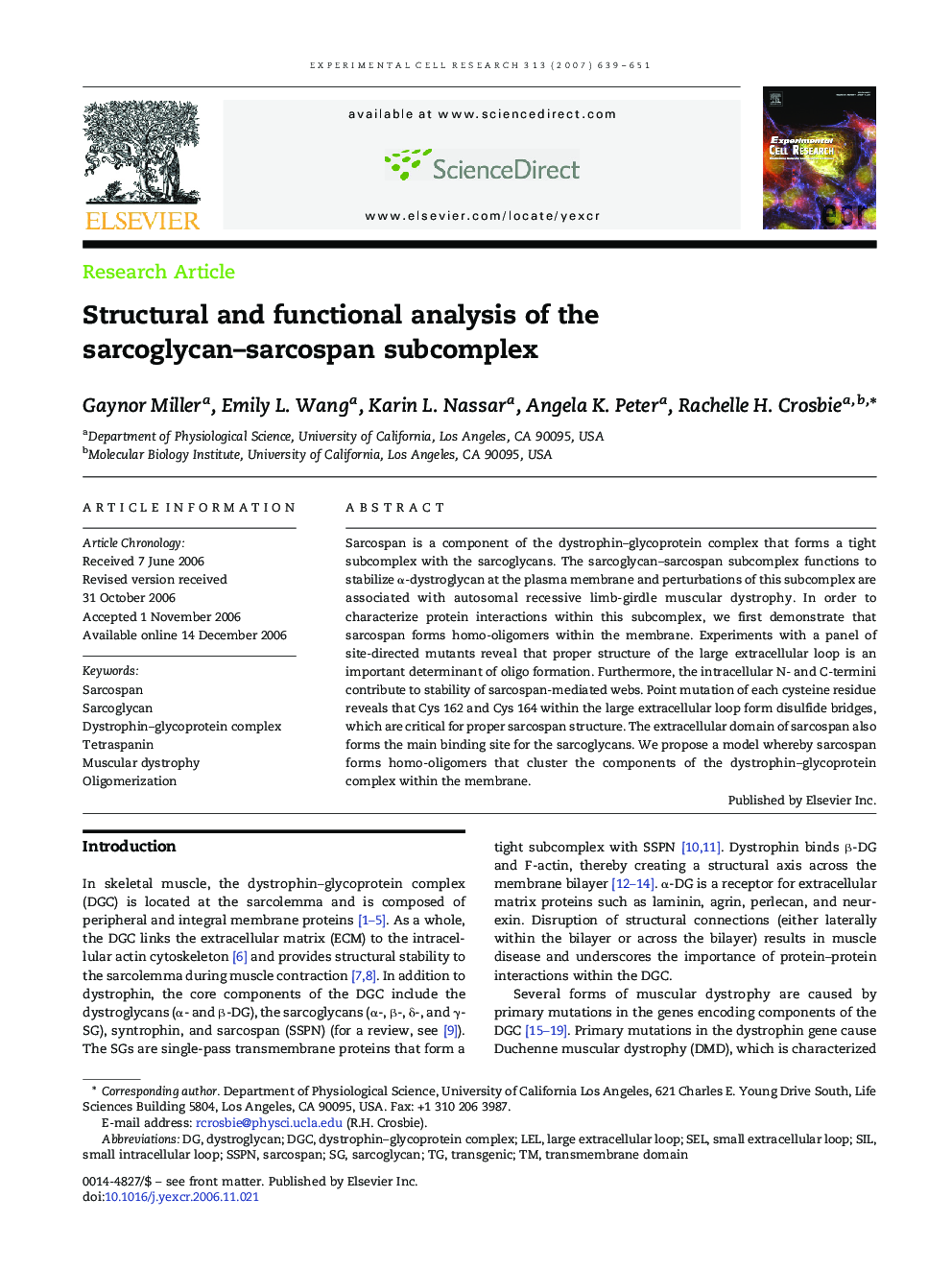| Article ID | Journal | Published Year | Pages | File Type |
|---|---|---|---|---|
| 2132033 | Experimental Cell Research | 2007 | 13 Pages |
Sarcospan is a component of the dystrophin–glycoprotein complex that forms a tight subcomplex with the sarcoglycans. The sarcoglycan–sarcospan subcomplex functions to stabilize α-dystroglycan at the plasma membrane and perturbations of this subcomplex are associated with autosomal recessive limb-girdle muscular dystrophy. In order to characterize protein interactions within this subcomplex, we first demonstrate that sarcospan forms homo-oligomers within the membrane. Experiments with a panel of site-directed mutants reveal that proper structure of the large extracellular loop is an important determinant of oligo formation. Furthermore, the intracellular N- and C-termini contribute to stability of sarcospan-mediated webs. Point mutation of each cysteine residue reveals that Cys 162 and Cys 164 within the large extracellular loop form disulfide bridges, which are critical for proper sarcospan structure. The extracellular domain of sarcospan also forms the main binding site for the sarcoglycans. We propose a model whereby sarcospan forms homo-oligomers that cluster the components of the dystrophin–glycoprotein complex within the membrane.
